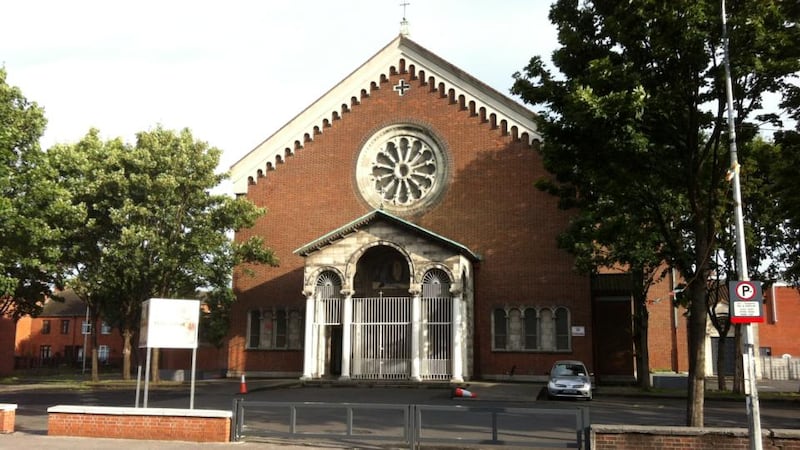What causes an area to decline? And, more importantly for the future, what might cause it to rise again? Just Imagine, the work of final year Interior Architecture students from Griffith College, aims to rethink Dublin's north eastern inner city, whose architectural gems and cultural history are often ignored.
The idea of repurposing buildings isn’t new: historic and industrial buildings become art galleries, Ireland’s great houses are turned into hotels, and churches are converted for various uses, such as McCullough Mulvin’s wonderful library in Rush, Co Dublin.
Equally, gentrification projects have seen entire areas redeveloped, with varying degrees of success.

The north inner city hasn't been without focus either: its Georgian architecture is championed; the Five Lamps Festival is an annual event; and the Lab gallery on Foley Street, together with Flood and the Oonagh Young gallery on James Joyce Street, are all contributors. Fire Station Artists Studios have done excellent work over the years, from Inner Art, in 1997, to Leo Higgins's Home, the memorial to all those who died as a result of drugs, which was unveiled by president McAleese in 2000.
But what do today’s future architects, designers and planners propose? John McDonald, course director at Griffith College was keen for each of the 23 students to get a sense of this part of the city. “Half come from abroad,” he says, “and previously we let them choose any building, anywhere, for their final year project. This time we wanted to give them a sense of Dublin.”
McDonald organised a walking tour of the area with local historian Terry Fagan, whose insights into its culture and history are unrivalled. Just a stone's throw from the Custom House and O'Connell Street, this part of Dublin has been both famous and infamous. Monto (Montgomery Street), for example, was once the largest red-light district in Europe.
Then the students were tasked with rethinking buildings to create projects that would attract visitors and tourists, be a local amenity, and provide training and/or employment for the area.
Neglect and disrepair
A tour reveals stunning gems, as well as shocking neglect. There's Mountjoy Square, with its near-perfect proportions, and also Aldborough House, which sits on Empress Place facing Portland Row. Begun in 1792, Aldborough House was the last of the great houses in Ireland, though it was never lived in by the Earls of Aldborough, who commissioned it.
Its current state of disrepair has been the subject of a series of haunting photographs by artist Martina Galvin, and it has done time as a school, a barracks, a post office stores, and HQ of the Irish Music Rights Organisation (Imro). For a while it served as artists' studios.
Attracted to “the abandoned romanticism” of Aldborough House, Norwegian student, Jenny Graatrud’s vision for this neglected landmark is as a museum of Irish film and costume design. Cinemas, exhibition spaces, cafes and a shop are all included, together with workshop, restoration and training spaces in the basement. Graatrud wanted to bring “this desolate building back to the dramatic”, and her images of a restored Aldborough house, with its formal gardens to the front reinstated, makes you realise what a resource lies behind the locked gates and high stone walls.
Also behind high walls, Rosaline Walsh's project looks at turning the Our Lady of Charity Refuge, a former Magdalene Laundry, to the rear of the convent on Seán MacDermott Street into a museum dedicated to the story of women from the area over the past 250 years.
“Initially I shied away from the idea,” says Walsh. “The building was eerie and it frightened me, but then I realised I was in danger of shoving its history under the carpet, like we all have done. And I thought those women deserved a voice, even if it was only the small one I can give them.”
Walsh’s vision for the building includes a memorial garden, and takes visitors through from the days of Georgian opulence, to the present day. “I wanted to put emotion into the space,” says Walsh, who hopes to work in museums in the future.
Italian student Victoria Ueberegger looked at developing the Our Lady of Lourdes Catholic church on Seán MacDermott Street. Built in 1954, dwindling congregation sizes and a change in the make-up of the local community mean that a good deal of the site goes unused.
Ueberegger’s solution is to refocus part of the building as a community centre, with a library, cafe and exhibition space, allowing it to maintain a role within the Catholic community, while also functioning as a centre for cross-denominational gathering and support.
As McDonald says: “We’re conscious of what is expected of our graduates as workplace needs evolve. The impact of buildings and the repurposing of buildings matters in neighbourhoods.”
Patterns of ownership change, social policy shifts, politics fail, but these projects show how interventions, whether small or large, on our current architectural stock, could change the fortunes of a whole area for the better.
Just Imagine runs at Darc Space Gallery, 26 North Great George’s Street, Dublin, from next Monday, September 9th-Sunday 15th. darcspace.ie
















